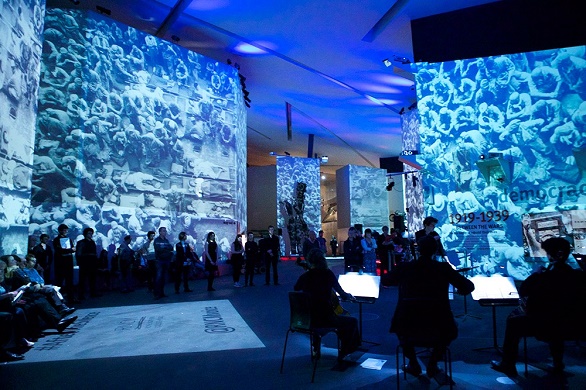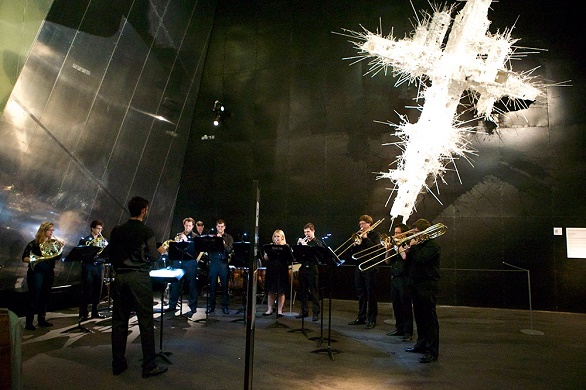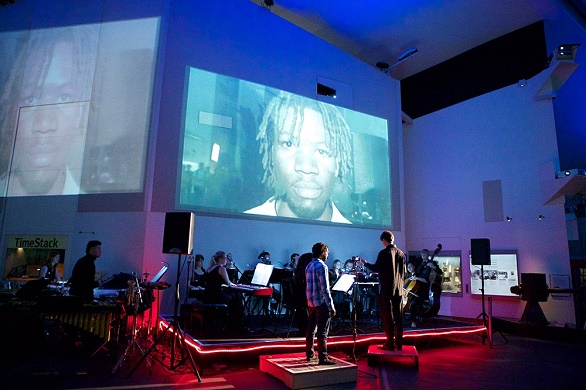After the Silence: Music in the Shadow of War
After the Silence: Music in the Shadow of War was an award-winning event which took place at the Imperial War Museum North between 3 – 5 July 2014.
Forming part of the venue’s Reactions14 series, this unique event featured over 300 musicians, 85 works, and 25 world premières, with music from the last 100 years.

Ranging from intense grittiness and iconic classical works, to morale-boosting jazz and ragtime, every aspect of the architectural statement embodied in Daniel Libeskind’s Salford Quays building was filled with echoing sounds resounding off its imposing walls. In transforming this magnificent building, After the Silence also inaugurated the RNCM’s partnerships with IWM North and Arts Council England.
In contrast to a traditional concert, this quasi-installation allowed people to make their own journey through a musical art gallery, with live music performed by RNCM students. From the courage of Penderecki’s Threnody for the Victims of Hiroshima to Elgar’s soothing Sospiri; the yet to be discovered works by student composers to Messiaen’s ethereal Quartet for the End of Time; and Mahler’s poignant Adagietto to Steve Reich’s Different Trains – the path was there for people to create as they wished.
 The whole concept of this curated soundscape centred on the emotions of war: violence/peace, despair/hope, horror/tranquillity. Mirroring Libeskind’s architectural aim to confuse and almost panic people in disorientating them by their physical surroundings, the artistic curation added uncertainty, superimposed sounds and the element of revelation.
The whole concept of this curated soundscape centred on the emotions of war: violence/peace, despair/hope, horror/tranquillity. Mirroring Libeskind’s architectural aim to confuse and almost panic people in disorientating them by their physical surroundings, the artistic curation added uncertainty, superimposed sounds and the element of revelation.
The museum’s main exhibition space housed intense emotional journeys: anger, violence and despair on the one hand, stillness, hope and serenity on the other. The huge walls were transformed by moving images of live dance, photos and videos depicting vast landscapes of devastation, and new projection-mapped pieces, with colour and sound blended into one.
The silos within the space were used for world première commissions by RNCM composers, whose works responded to trigger works associated with war.

The Café served as the morale-booster of the event – the place where intensity was lifted and spirits were raised. Swing and big-band jazz recreated a nostalgic atmosphere where rationing was forgotten, the horrors of war were left behind, and dreams could be lived – if only for a couple of hours.
Outreach formed an important part of the event as the College worked with over 80 people of all ages to create performances that reflected the impact of war on culture and on children and families as part of the From Street to Trench exhibition.
In 2015, After the War: Music in the Shadow of Silence, was awarded the Times Higher Education Award for Excellence and Innovation in the Arts.

